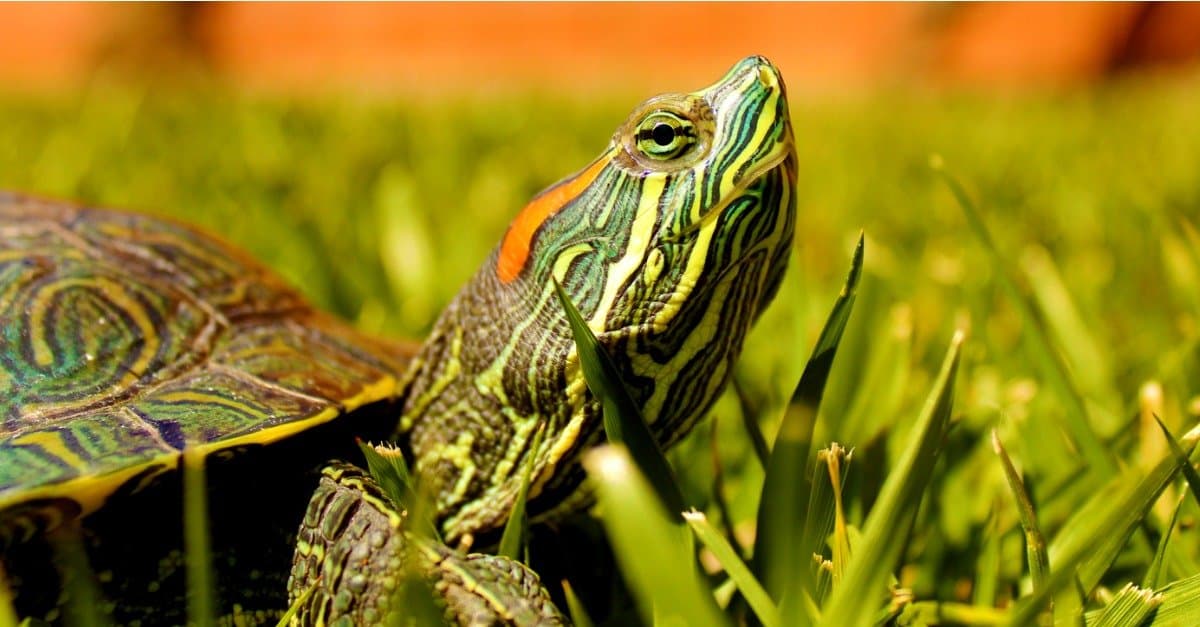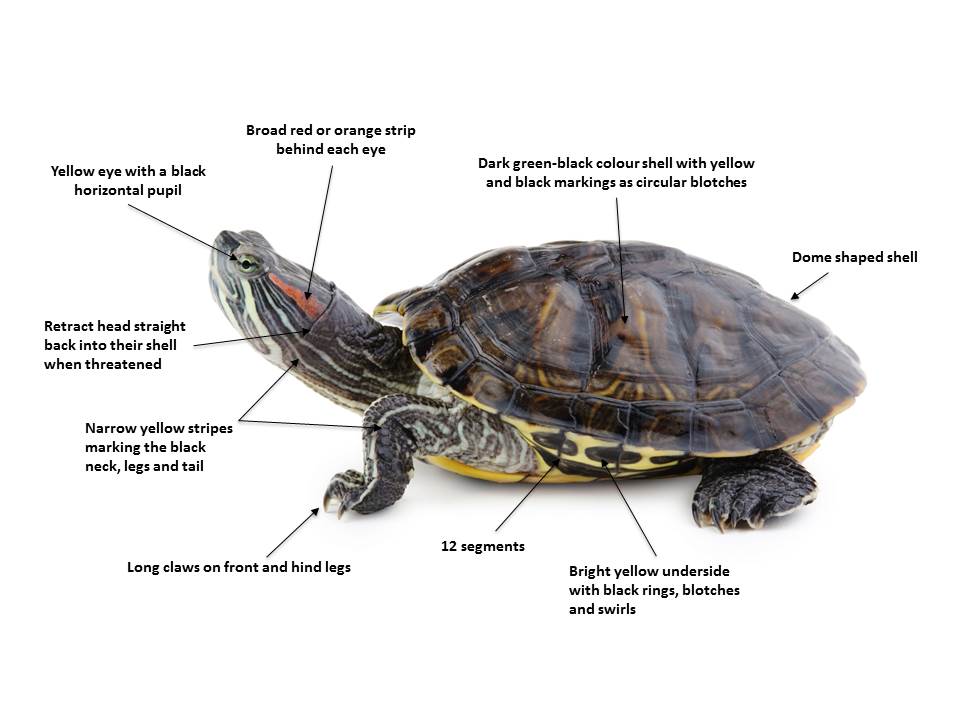Red-eared slider turtles are characterized by their distinctive red mark on each side of the head and the ability to retract their limbs into their shell. These turtles are semi-aquatic, with a preference for freshwater habitats and a lifespan of up to 40 years.
They are known for their adaptability, making them popular pets, but also posing a threat to native wildlife when released into the wild. Due to their popularity, red-eared sliders are widely distributed and can be found in various regions around the world.
It is important to understand their key characteristics to provide proper care and ensure their well-being in captivity or when encountered in their natural environment.

Credit: a-z-animals.com
What Are Red-Eared Slider Turtles?
Red-eared slider turtles, scientifically known as trachemys scripta elegans, are semi-aquatic reptiles native to north america. They are commonly found in freshwater habitats such as ponds, lakes, and rivers. These turtles have distinct physical characteristics, including their dark green or olive-colored carapaces with bright red markings on the sides of their heads, from which their name is derived.
Red-eared slider turtles have a medium to large size, ranging from 7 to 12 inches in length as adults. In terms of their lifespan, they can live up to 20 or even 30 years with proper care. As for their reproductive behavior, male turtles use their long claws and forelimbs to attract females during mating season.
The females then lay their eggs in sandy areas near the water, and the hatchlings emerge after a few months. Understanding these key characteristics is essential for caring for red-eared slider turtles as pets and appreciating their natural beauty in the wild.
Understanding The Characteristics Of Red-Eared Slider Turtles
The red-eared slider turtle possesses unique characteristics that help it thrive in various environments. From their environmental adaptations and behavior to their diet and feeding habits, these turtles are fascinating creatures. They require specific temperature and light requirements to maintain their health and well-being.
Red-eared sliders exhibit both aquatic and terrestrial behaviors, making them adaptable to different surroundings. These turtles are known for their ability to easily navigate between land and water. Understanding the key characteristics of red-eared slider turtles is essential for those interested in keeping them as pets or studying their behavior in the wild.
By delving into their habitat preferences, diet, and behaviors, we can gain a deeper appreciation for these remarkable creatures and the environments they inhabit. So, let’s explore the fascinating world of red-eared slider turtles and their distinctive traits.
The Unique Features Of Red-Eared Slider Turtles
Red-eared slider turtles have unique features that set them apart from other turtle species. One distinctive characteristic is the red ear patches found on the sides of their head. These patches give the turtles their name and make them easily recognizable.
Another notable feature is the pattern on their shell, which varies from individual to individual. Red-eared slider turtles also have webbed feet that enable them to swim and maneuver efficiently in the water. They are highly aquatic creatures and spend most of their time in ponds, lakes, and rivers.
As they grow, their shells undergo a process called growth and shedding, where they shed old scutes and replace them with new ones. Additionally, the color of their skin can change based on temperature and mood, making them fascinating creatures to observe.
Red-eared slider turtles truly exhibit remarkable characteristics that make them a popular choice among reptile enthusiasts.
How To Identify The Gender Of Red-Eared Slider Turtles
Red-eared slider turtles possess distinctive characteristics that help differentiate their gender. In terms of identifying the sex of these turtles, it is important to observe their physical attributes and understand the differences between males and females. Observational cues such as the length of their tails and the shape of their shells can provide indications of their gender.
However, for a more expert and accurate identification, specific methods can be employed. These methods may involve examining the cloaca, which is the opening through which turtles eliminate waste and lay eggs. By studying the cloaca’s position and structure, it becomes easier to determine whether a turtle is male or female.
Additionally, specialist examinations can be conducted to ensure accurate gender identification. Remember, understanding the key characteristics of red-eared slider turtles and how to identify their gender is crucial for their care and well-being.
Maintenance And Care For Red-Eared Slider Turtles
Red-eared slider turtles have certain key characteristics that make them fascinating pets. Proper maintenance and care are crucial. Creating a suitable habitat with the right tank setup is essential for their well-being. Maintaining water quality and using effective filtration systems ensure a healthy environment.
Providing the right diet with proper feeding and nutrition is important for their growth. Being aware of common health issues and taking preventive measures can help keep them happy and thriving. It’s essential to ensure their habitat is comfortable and safe, replicating their natural habitat as closely as possible.
Taking care of red-eared slider turtles requires commitment and attention to detail, but it’s well worth it to have these amazing creatures as companions. So, let’s dive into the world of red-eared slider turtles and explore their unique characteristics!
Conclusion
To sum up, red-eared slider turtles are fascinating creatures with unique characteristics. Their striking red marks behind the eyes, vibrant green and yellow markings on their carapace, and their ability to retract into their shell make them easily recognizable. Red-eared sliders are highly adaptable and can thrive in various habitats, including freshwater lakes, ponds, and rivers.
These turtles are known for their social behavior, often basking together in groups and even females laying eggs in communal nests. Their omnivorous diet and excellent swimming abilities enable them to survive in diverse environments. However, it is essential to note that red-eared slider turtles require proper care and attention if kept as pets.
Providing them with a suitable habitat, balanced diet, and regular veterinary check-ups are crucial for their well-being. By understanding and appreciating the key characteristics of red-eared slider turtles, we can ensure their conservation and help them thrive in their natural habitats.






Leave a Reply